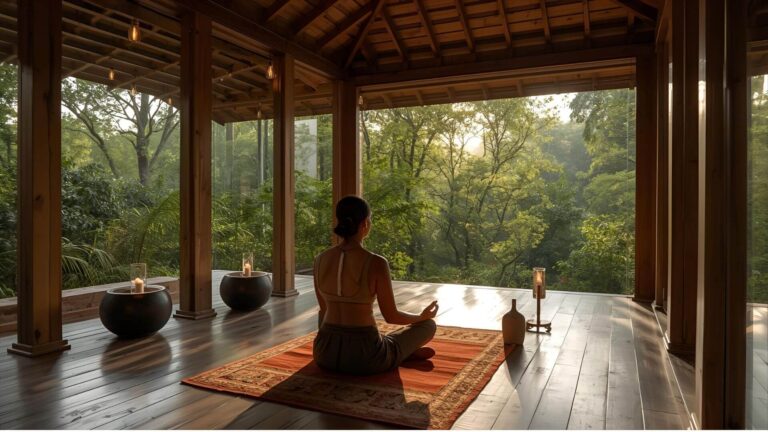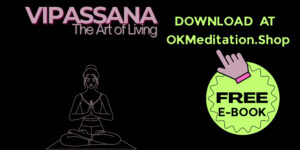Vipassana is insight meditation. The aim is not to chase special states but to see clearly what is happening in the body and mind moment by moment. As attention stabilizes, three characteristics become obvious in direct experience: impermanence, unsatisfactoriness, and not-self. Seeing these clearly reduces reactivity and creates space for wise action.
Origins and context
Vipassana draws from early Buddhist teachings on mindfulness and insight. The Satipatthana framework describes four areas of practice: body, feelings, states of mind, and mental objects. In practical terms, you train attention to notice sensations, the pleasant or unpleasant tone that follows them, the state of the mind observing them, and the patterns that shape perception and behavior. Modern Vipassana lineages vary in technique, but the intent is consistent: look closely, learn directly, live more skilfully.
Core principles
Direct observation. You study what is present now rather than analyzing stories about it.
Equanimity. You allow sensations and thoughts to arise and pass without pushing or clinging.
Continuity of awareness. You rebuild attention every moment instead of forcing stillness.
Ethical container. Honesty, non-harm, and restraint support clarity and reduce agitation.
How a typical 10-day retreat works
Arrival day offers silence, simple lodging, and a strict schedule. Days begin before dawn. Practice alternates between sitting and walking meditation, with instructions and short talks. Meals are simple. Phones and books are set aside to reduce stimulation. The intensity of silence and steady practice reveals habits quickly. By the final days, many students report clearer attention, less craving for distraction, and a sober understanding of how rapidly experience changes.
Home practice method
Choose a duration you can respect, for example 20 to 45 minutes.
Sit comfortably with a stable spine. Eyes can be gently closed.
Establish attention on the breath. Feel it at the nostrils or abdomen.
When attention is steady, widen the field. Notice sensations in the body as they arise and pass.
Include feeling tone. Recognize pleasant, unpleasant, or neutral without reacting.
Notice mind states such as restlessness, dullness, irritation, or calm. Label softly and return to observing.
When thoughts appear, see them as mental events. Note their beginning and ending without entering the storyline.
End with a short reflection. Note what supported clarity and what pulled attention away.
Common obstacles and workable responses:
- Restlessness. Shorten the breath focus window, then expand. Add brief standing or walking periods.
- Sleepiness. Open the eyes slightly, sit taller, and increase the clarity of the breath at the nostrils. A splash of water or a short walk can help.
- Pain or intense sensation. Adjust posture mindfully. Observe the sensation’s location, shape, pulses, and changes rather than the label “pain.”
- Emotional surges. Broaden attention to include the whole body and the contact points with the chair or cushion. Name the emotion quietly and return to sensation.
- Doubt. Keep sessions modest and regular for one week. Track what changes. Doubt often softens when you see results in your own behavior.
Benefits you can expect with consistent practice:
- Greater stability of attention and fewer automatic reactions.
- Clearer recognition of feeling tone, which allows earlier and kinder choices.
- Less identification with thoughts and moods.
- Increased capacity to meet discomfort without avoidance, which generalizes to daily life.
Safety notes and contraindications
Vipassana can surface intense memories and emotions. If you have an active mental health condition, consult a qualified professional and consider guided formats with experienced teachers.
Retreats are demanding; build a daily practice first. Sleep, nutrition, and movement support the nervous system and should not be neglected. If traumatic material arises, widen attention to present-time anchors such as feet on the floor and the feeling of the seat. It is acceptable to pause, stand, or switch to a grounding practice.
Simple daily structure to start now
- Morning: Ten to twenty minutes of breath and body observation before screens or caffeine.
- Midday: One three-minute reset: feel the soles of the feet, relax the jaw, follow five breaths.
- Evening: Ten to twenty minutes of sitting, then write one line in a log about what you noticed, not what you think it should mean.
Frequently asked questions:
Do I have to stop thoughts?
No. You learn to see thoughts as passing events. Fighting them strengthens them.
Is Vipassana religious?
It is a method. No belief is required. Ethical guidelines support clarity but do not demand ritual.
Can I combine methods?
Yes, if you stay clear about your intent. Use Vipassana to see; use concentration methods to steady. Alternate deliberately rather than mixing unconsciously.
How long to notice change?
Many people feel shifts in reactivity and clarity within two to four weeks of regular practice. Durable change follows months of consistency.
When to consider a retreat
When your daily practice is steady, when life circumstances allow rest and silence, and when you have basic skills to meet discomfort kindly. Research your center’s code of conduct, schedule, and teacher support. Choose a start date that you can commit to without strain.
Vipassana is not about becoming a different person. It is about seeing clearly how experience unfolds and discovering that wiser choices are possible in every moment. Start small, practice regularly, and let insight grow from what you actually observe.
© 2025 Svety Oklad | Meditation Coach, Digital Creator & Wellness Tech Explorer.
Based in Dubai, working worldwide in content creation, SEO, and WordPress optimization.
Please, send your inquiry via contact form.
Discover my portfolio of mindfulness projects, brand collaborations, and digital media strategies. Follow my journey on Instagram and YouTube for meditation, travel, and creative content.

